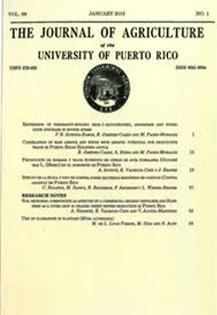Abstract
Burkholderia glumae is the agent responsible for bacterial panicle blight disease (BPBD) of rice that causes severe damage to this crop worldwide. During 2012 and 2013, symptoms of BPBD were observed in Palestina city, located in Guayas province, Ecuador. In 2014, the presence of B. glumae was confirmed at this location. In view of the socio-economic importance of rice in Ecuador, this research aimed to investigate the prevalence of B. glumae in other rice-producing regions. Eighteen bacterial isolates obtained from blighted kernels were characterized. Physiological, biochemical, serological, and molecular assays and the amplification of the 16S-23S rRNA ITS of the bacterial isolates collected confirmed the identity of the BPBD-associated bacterium. Pathogenicity assays verified the ability of these isolates to produce discoloration, spotting, and empty grains, symptoms associated with BPBD. Antibiotic assays showed that EC-EELS-01 isolate was sensitive to ciprofloxacin and tetracycline, and resistant to polymyxin. The dissemination and prevalence of B. glumae were confirmed in the rice-producing areas of El Oro, Cañar, Guayas, and Los Rios provinces. This research will serve to develop genetic studies to characterize the population in the B. glumae isolates in Ecuador.

